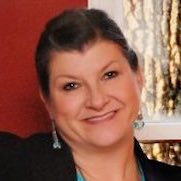8 minutes
Many factors are impacting the dream of homeownership for younger buyers today.
It’s no secret the mortgage industry has seen its fair share of ups and downs over the past two years, with lenders navigating the shift from a hot to an increasingly uncertain market amid rising rates and looming recession. Lenders are also experiencing a shift in first-time homebuyers’ mindset.
Pages have been written about millennials and Gen Z, but much goes into an individual’s psyche and decision-making. Statista reports that between 2018 and 2022, the share of U.S. millennials who expect to always rent their home increased from 13.3% to 24.7%.
“Following the 2008 financial crisis, younger generations saw parents losing their homes or fighting foreclosure. This led to some indifference, even reluctance to home ownership,” notes Jerry Reed, CEO of CUES Supplier member Member First Mortgage, a credit union service organization based in Grand Rapids, Michigan. “As a result, many of these individuals opted to rent instead of dealing with the stress of buying and maintaining a home.
“[But] there are signs the tides are turning toward homeownership,” says Reed. “Younger buyers are finally at an age where they’re forming households, starting families. Contrary to previous polls, millennials want housing to raise those families.”
Millennials and elder Gen Zers who rented or began their homeownership journey with condos or smaller properties in urban settings are now looking to upgrade. “[They] are looking to the suburbs and rural areas to raise those families where space is readily available in both the housing and outside yard space,” Reed says. “These buyers are re-entering the market, looking for affordable homes and fast and affordable mortgage solutions.”
New Market, Different Values
“Unfortunately, we in the mortgage industry haven’t done particularly well in making it easy for younger buyers, especially with the application process,” Reed continues. “Much is because of the compliance [requirements] that came out of the 2008 recession and discriminatory practices that have occurred for decades. The resulting compliance [process] can feel restrictive, and an overwhelming number of documents can intimidate younger buyers.”
Reed says that newer generations are conditioned to function without face-to-face interactions. “We must adapt to this changing perspective. Today’s buyers have grown up on the computer, and their channels of contact are evolving, so competing with technology for their mortgage business is critical.”
Younger homebuyers immediately go to the internet for information, Reed notes. “However, up to 90% of these individuals still want to talk to a human being following their research—and here is where CUs can capture the lead,” he says. “Like previous generations, they see a home purchase as monumental and don’t want to do it wrong. Specifically, we’re not connecting to younger generations at a moment that resonates. Education and addressing their concerns—things that credit unions do well—are what younger borrowers desire.”
Competitive lending technology is a must. The bigger banks are cutting to the chase with technology, appealing to younger generations conditioned to click a button or swipe their phone to manage their financial business. “If a credit union isn’t on the same playing field, it may not even get a chance to connect with a potential buyer,” notes Reed. “Nurture these opportunities and step into your members’ lives as their kids are growing up. Provide mortgage education early, starting in high school and progressing as children become adults.”
The American Dream
Even with an increase in millennial renters, a 2023 Bankrate.com study found that 74% of U.S. adults still view homeownership as part of the American Dream. This includes 76% of Gen Xers (ages 43-57), 62% of younger millennials (ages 27-33) and 63% of Gen Z (ages 18-26). Older millennials (ages 34-42) were absent from the list. Most Americans (64%) are also willing to make sacrifices to find affordable housing.
“Financing a home is not something most people want to think about—but what they do think about a lot are their dreams,” says CUES member Tansley Stearns, CME, CSE, president/CEO of $1.5 billion Community Financial Credit Union, Plymouth, Michigan. “As credit unions, we have a unique opportunity to assist with those dreams by offering awareness, education and tools. … Nobody wants a mortgage; they want the comfort of a home where they can spend time with those they love. Today, we can tailor our products to meet the consumer’s shifting needs, values and wants.
“For example, we’ve learned that owning a home is not as much about social status today—and the size of the home is not the same dream as earlier generations. Many younger buyers are choosing smaller homes to save resources for other parts of their lives, such as their careers, family and traveling,” notes Stearns.
With this trend in mind, Community Financial CU began testing the tiny home market earlier this year. “We’ve constructed two tiny homes we call ‘flex offices,’ which travel throughout Michigan to spread the word about our mortgages,” Stearns explains. “Here, we can connect with more people in more places and showcase what owning a tiny home is like.”
An increase in multi-generational living has also impacted homeownership. “The next generation is staying with Mom and Dad longer than they once did,” Stearns observes. Nevertheless, “while owning a home hasn’t happened at the same time as it did for other generations, it still deeply matters.”
Overcoming Barriers
“Affordability issues, such as high home prices, income that is too low or not being able to afford the down payment and closing costs, are holding back nearly three in four aspiring homeowners,” writes Greg McBride, Bankrate’s chief financial analyst, in the Bankrate report. “Among nonowners who aspire to homeownership, the most cited hurdles were not enough income (46%), home prices that are too high (42%), and the inability to afford the down payment and closing costs (40%).”
These are all very real challenges, but savvy CUs can embrace the opportunity to carve out a niche helping young homebuyers.
A common misunderstanding is that to qualify for a mortgage, you need to put 20% down. “Young buyers want and need lending education, as many do not properly understand what factors lenders use to qualify a buyer for a home loan,” says CUES member Mark Riegal, real estate agent with Real Estate One in Plymouth, Michigan, and a board member of Community Financial CU.
To address these barriers, the CU created a special-purpose credit program, “The Path to Homeownership,” reinforced by a collaboration with Detroit-based NINE Design + Homes and NINE Design owners Keith Bynum and Evan Thomas, hosts of the HGTV show “Bargain Block.” The program highlights their journey of restoring a block of Detroit homes into affordable, stylish starter homes for first-time buyers.
“Keith and Evan shared the obstacles they commonly see among first-time buyers, including the time required, credit score, down payment and approval criteria,” explains Stearns. “We structured a flexible mortgage program addressing these obstacles to put more people into homes.”
The program offers flexible criteria: incorporating consistent rent payments as a basis for approval; using, if the homebuyer chooses, a home’s state equalized value, automated valuation models or even broker price opinions for home value appraisals where allowable, as these can be lower cost and quicker to obtain; no minimum credit score requirements; affordable closing costs; and fixed rates.
A faster, smoother approval process has been vital, notes Stearns. And, “because we hold the mortgage, we can customize the loan and value the home differently than Fannie Mae.”
Another obstacle for many buyers is credit score. “Many borrowers have credit score challenges,” Stearns says. “Despite those challenges, they often pay their rent perfectly, but positive rent payment history is … not traditionally reflected in a consumer’s credit score.”
The final obstacle: the need for a sizeable down payment. “We relaxed the standards typically needed, ... so members could buy with little or no down payment,” says Stearns. “It also eliminated the need for private mortgage insurance.”
The collaboration with NINE Design + Homes has been a merging of values. “By sharing the obstacles they saw, we could structure a program to get more members into homes.”
Student Debt Looms Large
With student loan debt reaching $1.74 trillion and the average federal student loan debt in the U.S. at $37,667, it’s no wonder Reed sees the student loan crisis as a significant barrier to millennial homeownership. “The crisis has been hugely mismanaged by the persons incented to put these young people into loans. Twenty years ago, you could discharge a student loan if you couldn’t find a job. That’s not an option anymore. And with fewer ways to build wealth, young homebuyers are struggling.”
For example, those with $80,000 worth of student debt can’t rise up the corporate ladder fast enough to purchase the kind of home their parents did. “The standard of living of younger generations has gone down,” stresses Reed. “The result is younger individuals buying smaller homes or in neighborhoods they might not have initially chosen. They’ve also settled into higher density or more urban situations because that is all they could afford.”
Reed notes that most people in the U.S. are not born into wealth. “However, wealth can be built through homeownership. Not only does it foster roots, but it is the basis for the economic progression of this country. ... More importantly, it creates communities and a support center for families.” cues icon
Owner of Fab Prose & Professional Writing, Stephanie Schwenn Sebring assists credit unions, industry suppliers and any company wanting great content and a clear brand voice. Follow her on Twitter @fabprose.






